Additional notes (click to expand)
Horticulture
Rosa nitida is a suckering, deciduous shrub that forms a thicket, 90cm high. Its stems are thin and covered in fine bristles. Its pinnate leaves have 7 to 9 shining leaflets which turn bright red, yellow and purple in the autumn. Its small pink flowers appear in summer and are subtly but sweetly scented. They are followed by small, round, red hips.
Quest-Ritson, C & B. (2003). RHS Encyclopedia of Roses, Dorling Kindersley p.286
To propagate, collect the ripe, red rose hips and remove the seeds. Gently rub the plumpest with sandpaper. Plant immediately and watch for seedlings emerging the following spring.
Be vigilant for rooting suckers. These can be cut with secateurs from the mother plant and potted up.
Canadian Wildlife Federation. 2015. Wild Roses. [ONLINE] Available at: http://cwf-fcf.org/en/discover-wildlife/flora-fauna/flora/wild-roses.html. [Accessed 08 November 15].
A very hardy rose, tolerating temperatures as low as −40 °C. Grow in a sunny position. It will grow in a wide variety of soil conditions, including soils which are poor, acidic and waterlogged. In the wild it grows in bogs and by the edges of ponds. In the garden it is admired for its good leaf colouration in the autumn. Lightly prune after flowering, in late summer, cutting back no more than a third of the stem. Sideshoots can be reduced by a half or two thirds.
Canadian Wildlife Federation. 2015. Wild Roses. [ONLINE] Available at: http://cwf-fcf.org/en/discover-wildlife/flora-fauna/flora/wild-roses.html. [Accessed 08 November 15].
Medicinal
In traditional herbal medicine the following notes apply to the related species Rosa x damascena:
The petals are applied externally as an astringent[240]. They are also made into a preserve and used as a tonic that helps to put on weight[240]. The buds (the report does not say if it is leaf or flower buds) are aperient, astringent, cardiac and tonic[240]. They are used for removing bile and cold humours[240]. The fruit of many members of this genus is a very rich source of vitamins and minerals, especially in vitamins A, C and E, flavanoids and other bio-active compounds. It is also a fairly good source of essential fatty acids, which is fairly unusual for a fruit.
https://pfaf.org https://pfaf.org/User/Plant.aspx?LatinName=Rosa+x+damascena
Nomenclature
Rosa nitida Willd. Rosaceae. Shining rose. Distribution: North-eastern North America. Nitida is Latin for shining, referring to the shiny leaves. The seed heads contain vitamin C.
Oakeley, Dr. Henry F. (2013). Wellcome Library notes.
link
Other use
First nation people are reputed to have used part of the roots as an ointment for sore eyes. The stems of the shrub were supposedly used for arrows.
Canadian Wildlife Federation. 2015. Wild Roses. [ONLINE] Available at: http://cwf-fcf.org/en/discover-wildlife/flora-fauna/flora/wild-roses.html. [Accessed 08 November 15].
Rose essential oil is used in aromatherapy for depression and nervous anxiety. Cosmetic uses include the application of rosewater as an astringent for the complexion.
Bird, R, Houdret, J. (2000). Kitchen and Herb Gardener. Lorenz. p.441
Rose hips are used for making vinegar, syrups, preserves and wines. Flower petals are added to salads and desserts, crystallised, made into jellies, jams and conserves. Distilled rose-water is used to flavour confectionary and desserts. Dried petals and essential oil are added to pot-pourri.
Bird, R, Houdret, J. (2000). Kitchen and Herb Gardener. Lorenz. p.441
Geographical distribution
- Northern America, Eastern Canada, Newfoundland
- Northern America, Eastern Canada, Ontario
- Northern America, Eastern Canada, Québec
- Northern America, Northeastern U.S.A., Connecticut
Rosa nitida
Family: ROSACEAEGenus: Rosa
Species: nitida
Common names: Shining Rose
Distribution summary: Northeastern North America
Conservation status (IUCN Red List): Least Concern
Habit: Shrub
Hardiness: H7 - Very hardy
Habitat: Marshes, margins of rivers, ponds and ditches
Garden status: Currently grown
Garden location: North America (A)
Flowering months: May, June, July, August, September
Reason for growing: Other use
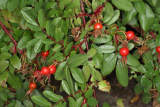

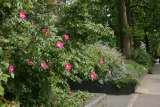
.JPG)
.JPG)
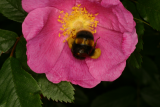
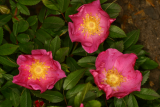


.JPG)
.JPG)
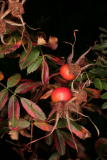


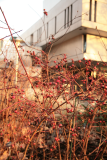
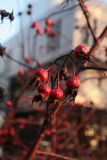
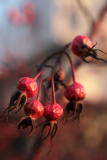

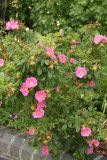
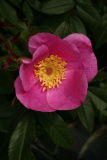
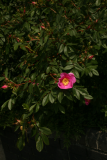
.JPG)
.JPG)
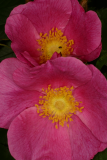

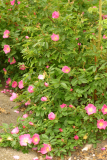

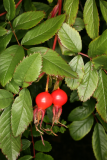
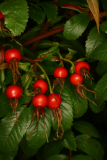
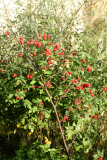
.JPG)
.JPG)